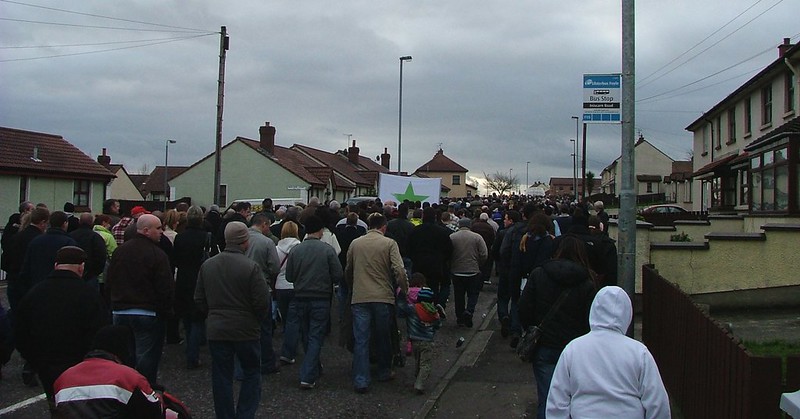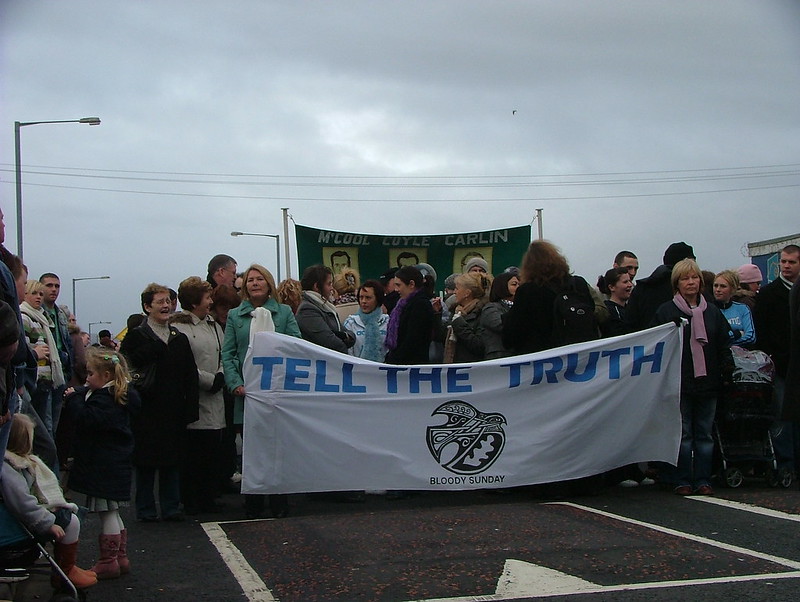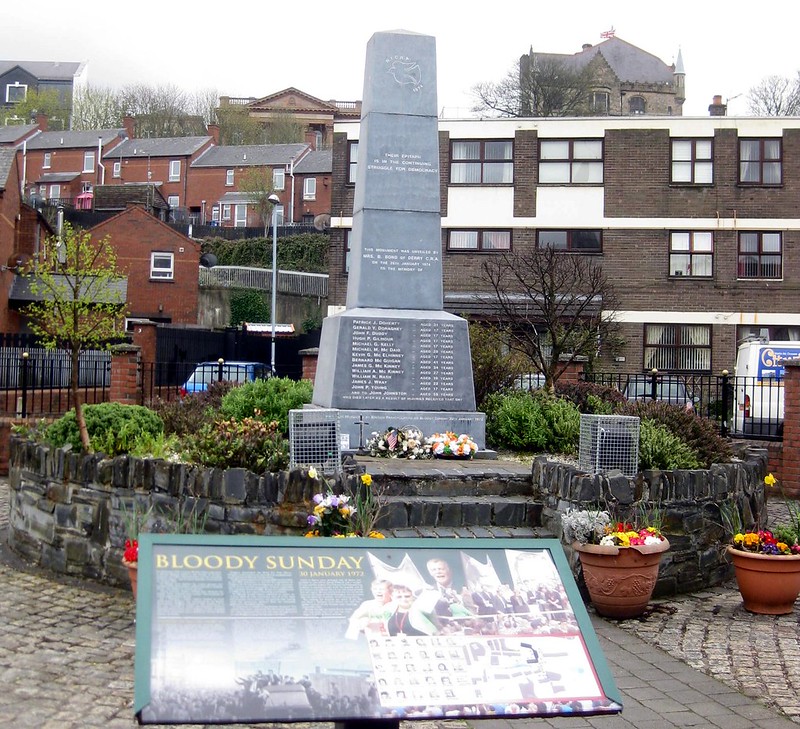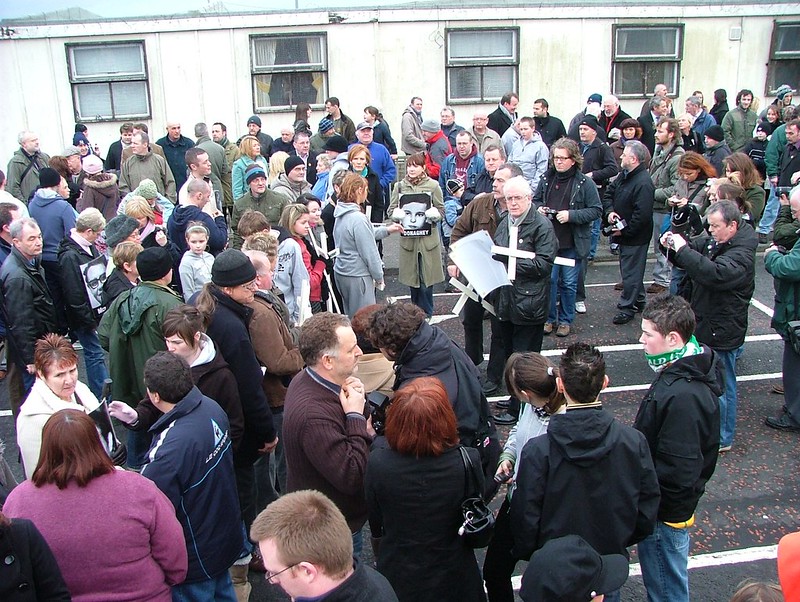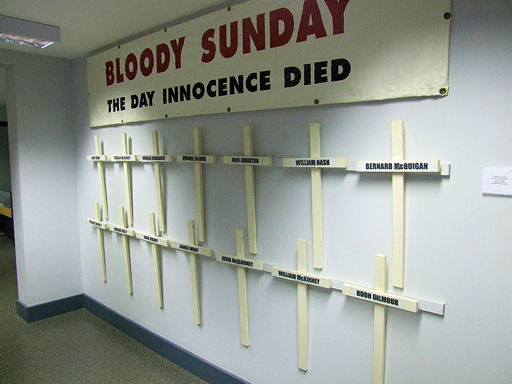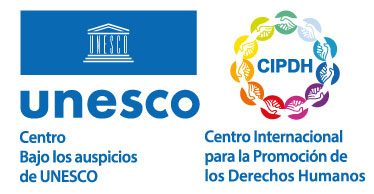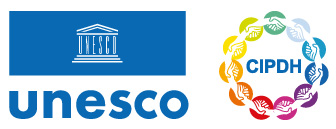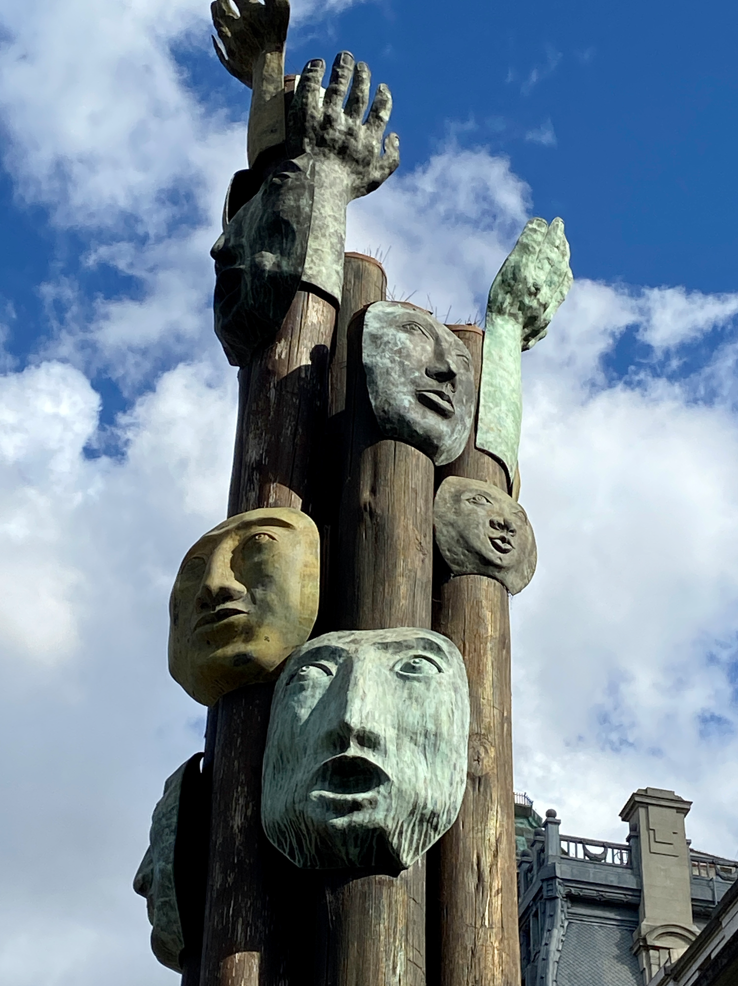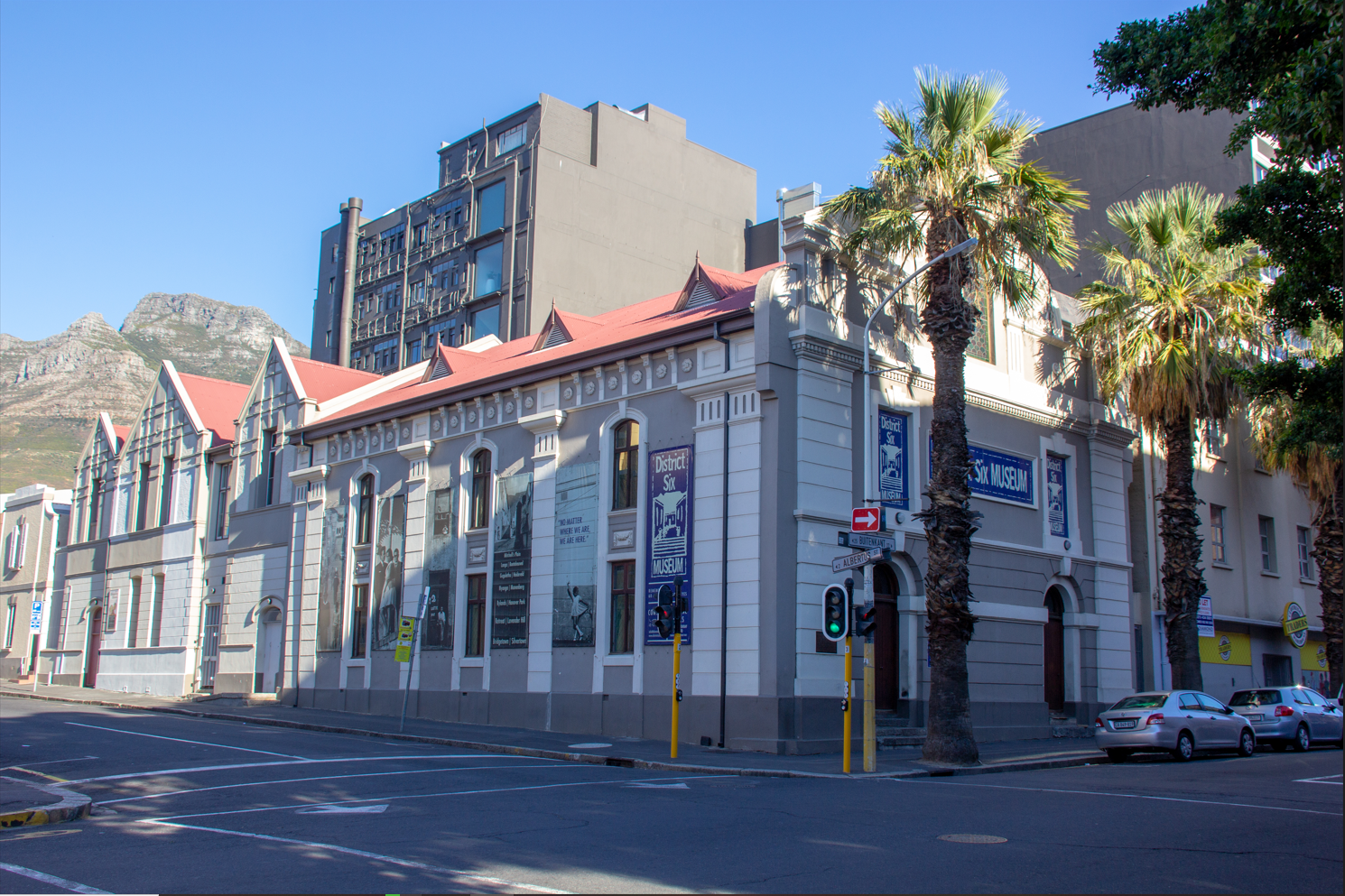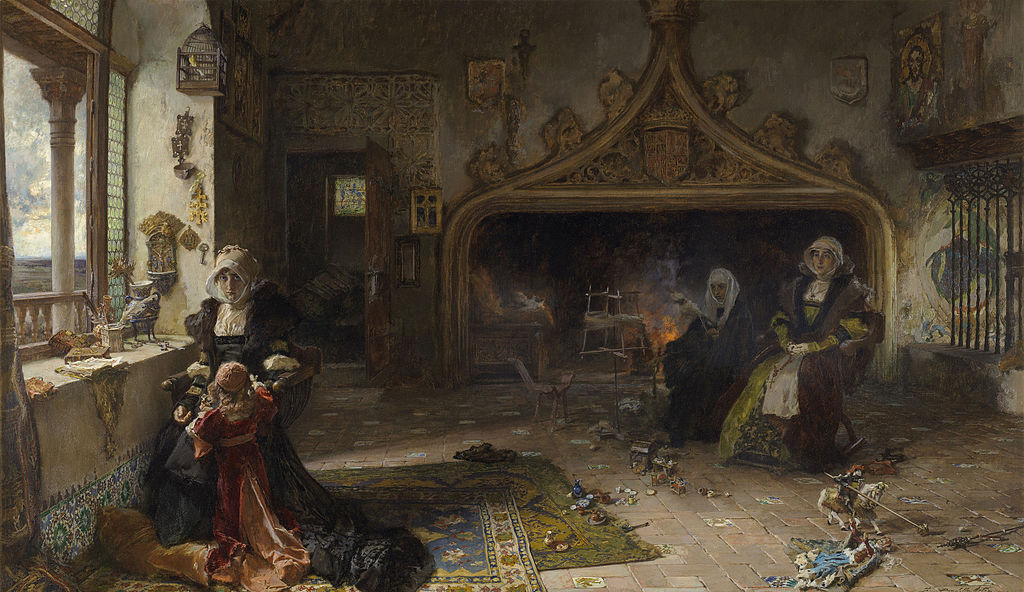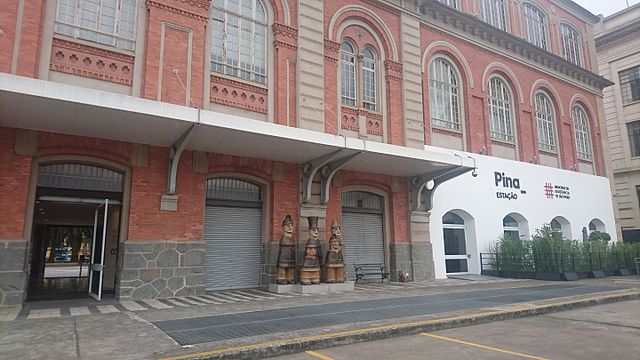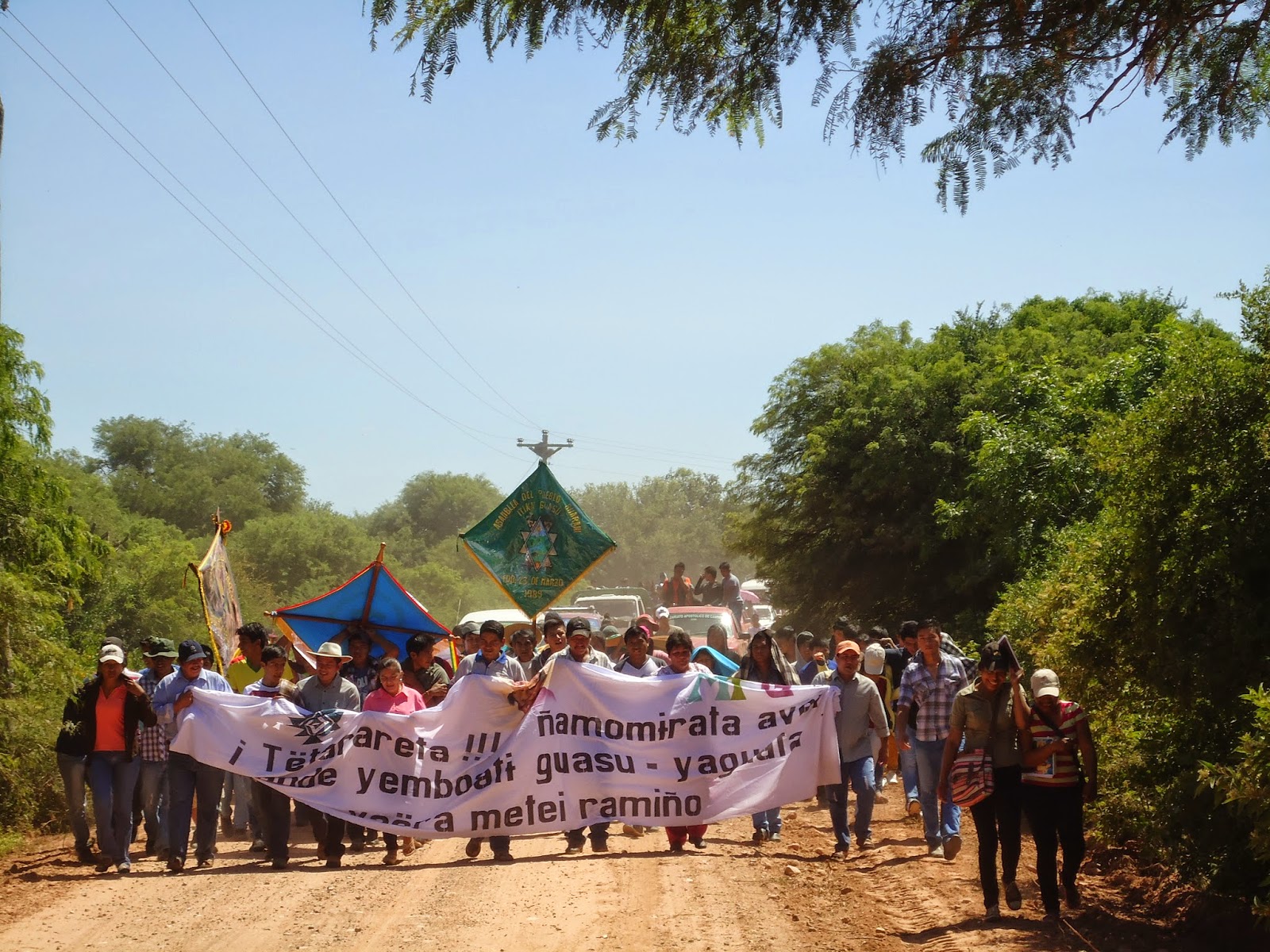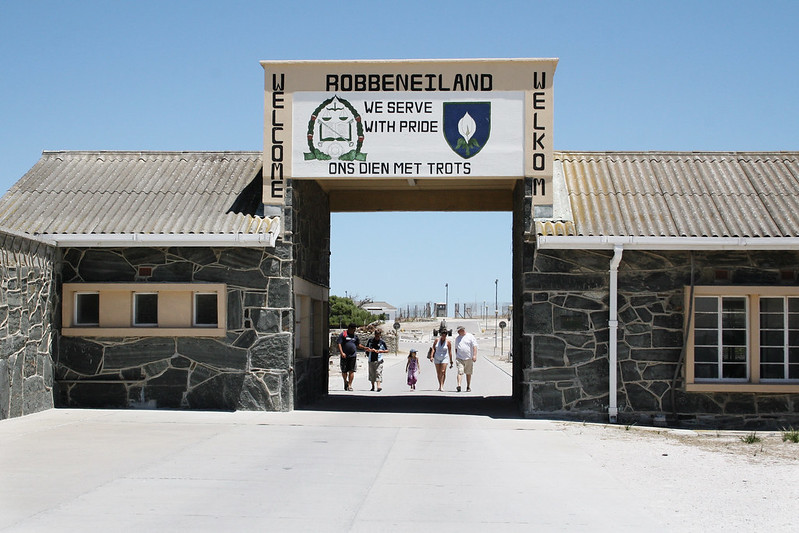March for Justice
Intangible
Theme: Political persecution

Address
Free Derry Corner
Country
Northern Ireland, UK
City
Derry
Continent
Europe
Theme: Political persecution
Purpose of Memory
To remember the victims of Bloody Sunday and demand justice for them and for other causes that involve human rights and social justice, whether at the local, national or international level, paying tribute to those who gave their lives in those struggles.
Known Designation
March for Justice
Institutional Designation
March for Justice
Date of creation / identification / declaration
1973
Public Access
Free
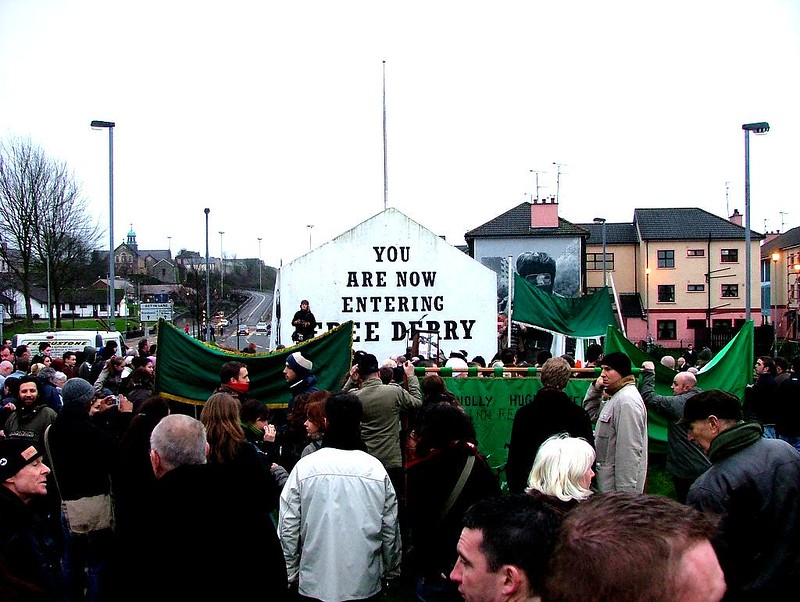
Location description
The March for Justice takes place annually in the city of Derry, Northern Ireland, on the Sunday closest to January 30.
Led by some families of the Bloody Sunday victims, the march follows the same route as the January 30, 1972 demonstration, in which a group of unarmed protesters was killed by the British Army. Participants carry crosses and banners with the victim’s names and photographs and crosses through Creggan, Brandywell, Bogside, Westland Street, and William Street, ending at Free Derry Corner on Rossville Street. There, at the Memorial of the Martyrs of Bloody Sunday erected in the place where the murders took place, they hold a minute of silence, leave floral offerings and make speeches.
Other groups that raise claims related to the recognition of civil rights also participate in the march, with posters and signs.
In the previous week, all kinds of commemorative events are held, including seminars, exhibitions, competitions, conferences and audiovisual projections.
A time of great turbulence began in Northern Ireland in the late 1960s. The city of Derry was the center of much of the conflict of that period – known as “The Troubles” – between factions that aimed to remain under British authority and identified with Protestantism, and a nationalist minority more identified with Catholicism seeking to free itself from the United Kingdom. This faction, being a minority, was more vulnerable, impoverished and experienced more restrictions to their civil rights.
Faced with the imminent organization of paramilitary groups such as the nationalist Irish Republican Army (IRA) and the unionist Ulster Voluntary Force (UVF), the British Government deployed its army and launched the Internment policy. This meant that anyone suspected of being part of a terrorist organization could be arrested on the spot indefinitely and without trial.
In this context, the Northern Ireland Civil Rights Association (NICRA) was established, organizing different peaceful marches to demand civil rights and against Internment. Although they were not authorized, their route was usually agreed with the local authority and they did not report serious episodes of violence.
On January 30, 1972, in a march in which around 15,000 people participated, a group of young people deviated from the main route (which they were prohibited from leaving) and turned towards the Bogside. On William Street, they encountered the British paratrooper regiment occupying the barricades to prevent them from being recaptured by the protesters. The young men began to reprimand them and even threw stones and other objects at them, and the British military responded by opening fire. They ended up murdering thirteen unarmed people and seriously wounding thirty others, including a passerby who months later and because of those injuries became the fourteenth victim. This episode became known as Bloody Sunday or the Bogside Massacre.
The immediate consequence of Bloody Sunday was the dissolution of the Belfast Parliament, the burning of the British Embassy in Dublin and a wave of sign-ups to the IRA, after which the long civil war that ended with the Good Friday Agreement in 1998 began.
Less than three months after the events, the British Government presented its investigation known as the Widgery Report, that totally and unconditionally exonerated the soldiers determining that they had acted in self-defense.
Under pressure from the victim’s relatives, a new commission was created in 1998 , which in 2010 and through the Saville Report determined that the murders were “unjustified and unjustifiable”. For this the Prime Minister issued a statement of apology.
To date, personal responsibilities are still being judged.
In the days following Bloody Sunday, serious incidents took place around the world in protest of what happened. The public funerals of the victims were attended by more than 15,000 people and beggining on 1973, after the Widgery Report was issued, a crowd led by the families of the victims marched through the streets of Derry on the anniversary of the massacre, taking the exact same route from the 1972 march.
In January 1974, the Bloody Sunday Martyrs Memorial was inaugurated at the site of the murders. The monument is inscribed with the names of the victims and their ages, and holds the British paratroopers directly responsible. Since its inauguration, the march stops at that site and a minute of silence is held, floral offerings are left and speeches are made.
In 1992, a group of victim’s relatives launched a campaign for justice with three specific goals: to overturn Widgery’s findings and carry out a new investigation, to gain formal recognition of the innocence of their loved ones, and to prosecute those responsible.
The first two goals were achieved in 2010 when the Saville Report explicitly recognized the innocence of the victims and the guilt of the soldiers. The subsequent march, in January 2011, was led by a banner with the word vindicated and was announced as the last. However, a group of family members stated in their speech that the third aim of the campaign was yet to be met, that this march encompassed other demands for justice and civil rights and that they would return every year. This group continues to annually summon the massive remembrances.
In turn, a large number of artists of Irish origin have made the history of Bloody Sunday known to the world through songs, films and documentaries.
